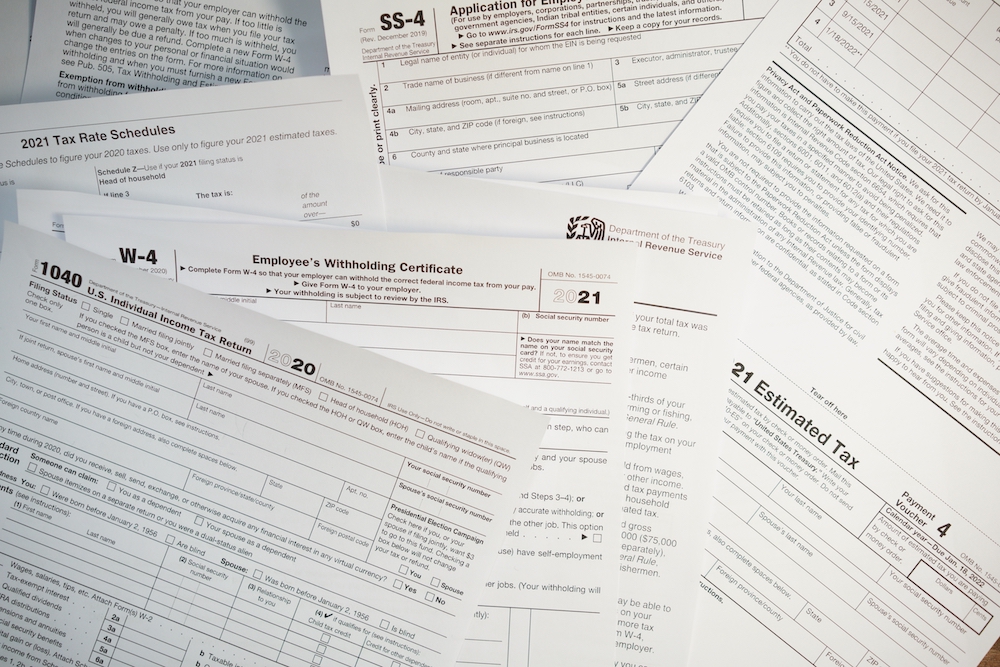
The inevitable tax season is upon us. If running a liquor store isn’t time consuming and stressful enough, taxes add a whole extra layer to it. There’s nothing more nightmarish than realizing the reports you need in order to do your taxes don’t exist. Or, you didn’t plan your inventory accordingly so now you have to pay the government more money.
But, you don’t have to let it weigh you down from here on out.
At Cheers POS, we have created a step-by-step guide for your small business tax preparation needs. Just as our point-of-sale system is designed to do, this guide will save you valuable time and headaches.
Whether you are a new liquor store owner or you have been around the block, we’re here to show you how you can make tax season quick and painless. This way, you can get back to doing what really matters: keeping your customers satisfied and coming back.
Step 1: Update inventory
First things first in small business tax preparation; make sure your inventory is up to date. Counting isn’t necessarily the most exciting activity, which is why we at Cheers POS came up with an intuitive solution.
Our inventory management system automatically updates your inventory directly from your POS. When it’s time to perform a physical count, you and your team can take inventory in sections, making the process a whole lot less overwhelming.
Inventory that hasn’t been sold is considered taxable income, so count accuracy equals money saved. Avoid paying more tax than necessary by using our comprehensive system.
Additionally, we have partnered with Monarch Inventory, a leading provider in inventory management for liquor stores. With Cheers POS and Monarch, you will never have to wonder where your money is going again.
Step 2: Assess losses
Discrepancies in your count can be extremely frustrating. What can you do about a product that is supposed to exist but no longer does? Especially when that product is still considered taxable income.
Whether the loss is due to theft, broken bottles, or an initial counting error, Cheers POS can help you identify losses and lower your tax bill. This is what makes having a liquor store inventory management system lifesaving. You can view loss reports that show these discrepancies in our system.
With the proof in these reports, you are able to write off these discrepancies as losses and they will no longer be fair game for taxable income.
If you feel like product is disappearing left and right, learn about loss prevention for liquor stores.
Step 3: Assess capital gain
A capital gain is an increase in value of a capital asset relative to the price that was originally paid for it. So, if you started with $100,000 in January and by the end of December you have $150,000, your capital gain is $50,000. Needless to say, you’re looking at paying a lot extra in taxes.
Your goal is to land as close to that $100,000 as possible by the end of the year. Capital gains are perceived as increased income. Even all the unsold liquor on the shelves counts toward this number. You definitely don’t want the government to think you’re trying to pocket that extra $50,000.
Ideas for reducing capital gain
Take a look around your store. When was the last time the place had a little TLC? How old are the floors? Have you been having trouble with any of the coolers? Does your store look like nothing has been done to it since the ‘80s? Listen, we loved the ‘80s as much as the next guy but it might be time for some renovations.
If you have leftover money that you would much rather not pay taxes on, consider updating a section or two of your store or adding a new cooler. Maybe some new lighting could make the place more pleasing to the eye. Customers value a clean environment with fun, new products to try. Updating your space will only help your business.
It might sound counterintuitive to spend extra money you weren’t planning to spend, but this is a pro-tip for small business tax preparation. Because as long as you are as close to that January baseline number as possible, your taxes won’t be through the roof.

Step 4: Gather reports
There are several reports and documents you (or your accountant/tax advisor) will need in order to file your taxes. We offer these basic financial reports in our all-in-one POS system and you can access them at any time.
Financial reports
Detailed Yearly Report
Shows how much money you started off with at the beginning of the year and the accumulation of profits each month until the end of the year.
We often find that store owners forget to record this. Trust us, this is valuable information for small business tax preparation. You are not going to want to forget about it. With Cheers POS, the DYR is reported for you and always accessible; there will be no opportunity to forget.
Monthly Value Report
Includes your store’s financial statements and performance reports on a monthly basis allowing you to see the data in smaller, seasonal chunks.
Sales Tax Report
Details the amount of sales tax collected on each product you sell. Sales tax is different for each category of products you sell, like liquor and soda for example, so they need to be reported differently. This report is generated monthly and reported yearly.
Category Sales Report
Exhibits the profits being collected from each product category (i.e. soda, liquor, snacks.)
Other necessary records
1. Previous year’s tax return
This way you or your accountant can see what you did last year and find deductions that your company has or has not been taking. Think of it as a guide.
2. Appropriate business tax forms
The tax forms you need will completely depend on the type of business your liquor store is. Reference Turbo Tax’s guide to filing taxes if you aren’t sure what forms you need.
3. Business asset information
You will need records of any assets you’ve bought, sold, or depreciated during the year.
4. Business loan information
If you took out a business loan for your liquor store, you will need the loan agreement and records of payments you’ve made.
5. Business expense records
These records may be receipts, bills, or bank and credit card statements.
6. Deductible expense records
You may be eligible for tax deductions, especially if you’re a small business. The qualifying terms can be confusing, which is why we recommend having an accountant or tax advisor. They speak the language and can easily spot a deduction opportunity that will allow you to pay less in taxes.
If you’re on your own though, check out this list of common deductions.
7. Payroll information
This includes employees’ tax forms as well as health insurance and bonus information.
8. Stocks or bond records
If you’ve bought or sold any stocks or bonds, you will need these records. Also, if you’ve withdrawn money from your liquor store to pay yourself or you have invested your own money into your liquor store, you will need these receipts or statements.
We know this is a lot. That’s why our number 1 value is providing you with solid support at any time. You can call us, chat with us, or email us and feel good knowing we will respond promptly. If you have tax questions or need help understanding certain reports in our system, we are here to help.
Congratulations, you made it through the thick of small business tax preparation. Now, let’s discuss ways you can make this process even easier for next tax season.

Tips for the next tax season
It may seem ridiculous to start preparing this early, but your future self will thank you.
1. Report, report, report
Remember what we said about reports? You can’t forget to run your reports; they are required for taxes. Unless you love paying attention to detail like we do, you aren’t going to be thrilled about reports.
We’ve got you covered. Our comprehensive POS system will run ongoing reports for you. You barely have to lift a finger.
2. Keep up with inventory
Since you now understand how inventory correlates with taxes owed, you can imagine how important it is to keep your counts accurate. Lucky for you, we came up with 5 tips for liquor store inventory counting during tax season.
3. Hire an expert
The truth is, it might be time to hire a tax advisor who speaks the language of the IRS. They can quickly sort through your business’s documents and reports and keep you informed on your status.
We are here to help
Let’s face it: Running a liquor store is hard work. Then, you add taxes on top of that pile. We have been in your shoes. We built Cheers POS as liquor store people, for liquor store people to solve the biggest problems we have experienced in the process. Our POS system includes:
- Integrated credit card processing
- Hardware and peripherals
- Invoices and reporting
- Inventory management
- Purchase order automations
- Wholesale management
- Distributor integrations
The solutions don’t stop there. We continue to learn from our customers and encourage feedback on how our system is working for their businesses. Like our customers, you work hard and deserve a system that makes running your liquor store easier and tax season a breeze.
You’ve got questions, we’ve got answers
Truly, there is no limit to our customer service. Our people-loving support team wants to hear from you. Call us, chat with us, or email us to get some answers. Small business tax preparation-related questions or not, we’ve got your back.
If you’re ready to try us out, tell us more about your business to schedule your free demo.
Happy filing!